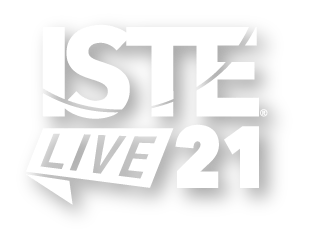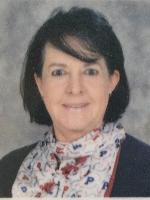

Geometry Meets Innovation and Creativity |
Participate and share : Poster
Mario Morimoto Ricardo Denis Alejandra Conde Maria Isabella Sanz Valeria Villalobos Ofelia Guajardo
The objective is that attendees understand that solid shapes and volume can be challenging but most importantly can be fun. This project explores geometry as how objects relate to each other and the space around them, and considers the purpose of innovation, sustainability and social responsibility has on everyday life.
| Audience: | Teachers |
| Skill level: | Beginner |
| Attendee devices: | Devices useful |
| Attendee device specification: | Smartphone: Android, iOS, Windows Laptop: Chromebook, Mac, PC Tablet: iOS, Android, Windows |
| Participant accounts, software and other materials: | The device will only be helpful in sharing videos of their Science Fair where the project was exhibited. |
| Topic: | Creativity & curation tools |
| Grade level: | 6-8 |
| Subject area: | Math |
| ISTE Standards: | For Educators: Learner
|
| Additional detail: | Student presentation |
| Disclosure: | The submitter of this session has been supported by a company whose product is being included in the session |
The topic is relevant as it delivers a purpose about the impact of innovation, sustainability and social responsibility has on everyday life and makes it a significant change in the way students perceive math.
Conceiving a creative environment that allow students to work on real life problems with their own ideas. This project enables basic aspects of designing lesson, collaborative work, communication and creativity and real world participation.
This project allows the teacher and students to decide what the final product may be. They would rather make, instead of a city, an aquarium, zoo or park. In every option the idea is using geometric shapes and volumes to make animals, objects, etc., that can be put together in a space.
The project is divided in various activities included in a schedule with deadlines and directions for each one. First students begin putting together more than one concept or idea by being introduced to the world of architecture. They watch and discuss several TED-ED videos about innovative buildings and listen to lectures on social responsibility and sustainability designs.
Then they plan and design their building by drawing a draft and writing a description that expresses their idea, in other words, the story told by the building itself. Everyone will have to design a building based on geometric shapes: prisms, pyramids and spheres, using their knowledge on volumes. To make sure all buildings are proportional, they are given specific lengths. And they are only allowed to use recycled materials. In this activity the students can work by themselves or with a partner.
To present the project each class group will decide how to distribute the buildings in an area, conceiving as a group the model of a city. On a QR code they make their digital presentation, including the draft copy, the description and story of the construction and the process and operations needed to calculate the volume and surface area. This last one is presented as a tutorial video.
This project has been part of the Science Fair. For students it is a great opportunity to show their work in public and it is convenient that by the digital presentation (QR code) they do not have to be in person, so they can be at the same time on different stands.
There are plenty of information to introduce the students to the world of architecture, Ted-ed is a resourceful site that update its videos and its a helpful support for this particular project. Also the conferences included in the site are as effective as the videos.
The following books and articles were cited for the project.
Books:
-De la Torre, M. (2005). Geometría Descriptiva; Universidad Nacional Autónoma de México, Escuela de Arquitectura, México.
-Gordon V.O. (1980). Curso de Geometría Descriptiva; Editorial Mir
-https://libros.conaliteg.gob.mx/20/S00340.htm#page/26
-https://digital.latiendadellibrero.com/pdfreader/matemticas-1-jimnez
Articles:
-http://funes.uniandes.edu.co/22379/1/Juarez2018Geometria.pdf
-http://bdigital.unal.edu.co/51458/1/30402933.2016.pdf; pp23-2528-30,31
-https://repositorio.unican.es/xmlui/bitstream/handle/10902/7821/ArroyoGutierrezRaquel.pdf;sequence=1
Websites:
-https://www.eadic.com/hiperboloides-en-ingeneria/
-https://www.masterclass.com/articles/creative-writing-exercises-to-strengthen-your-writing
-https://www.youtube.com/watch?v=l-MmLIdE9Gs
-https://www.expansion.com/economia-digital/innovacion/2018/09/27/5ba51516ca474152028b4582.html
https://ingemecanica.com/tutoriales/areas.html
https://www.ecured.cu/Cuerpos_geom%C3%A9tricos_(Volumen)
https://www.youtube.com/watch?v=brL1wgue-Ck






I am a Mexican math teacher at Pinecrest International School. I have a degree in computer science and I am the co-funder of Planea Consulting, a Mexican enterprise of financial services and project management. For more than 20 years I worked as a teacher and consultant. During the last years, I became a full-time teacher. My speciality areas are math, technology and English. I have taught in all levels from Elementary to High School. I Love to travel, watch films and share experiences with colleagues around the World.